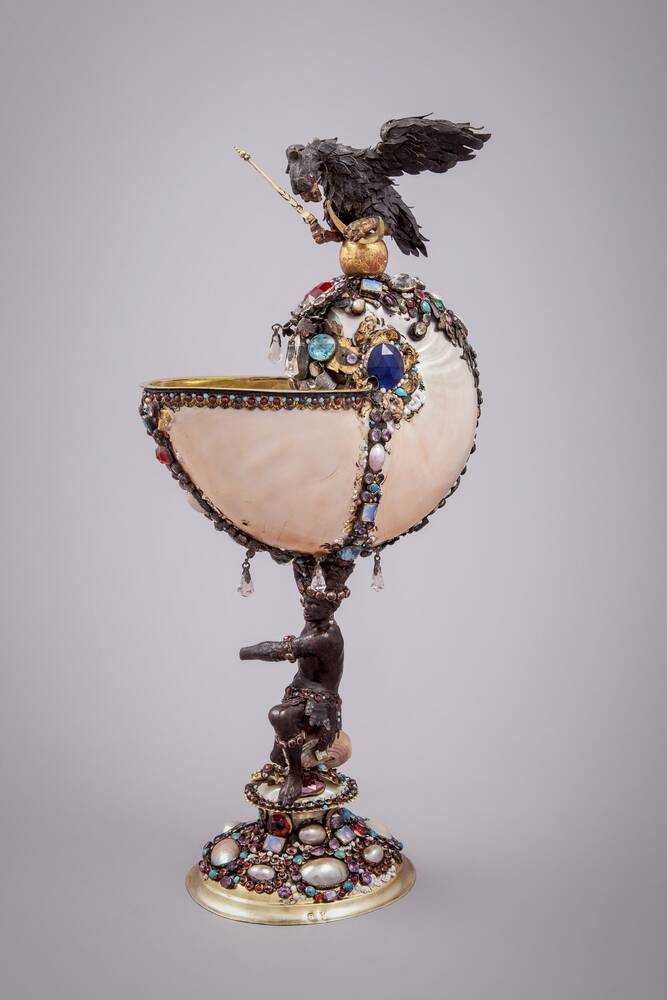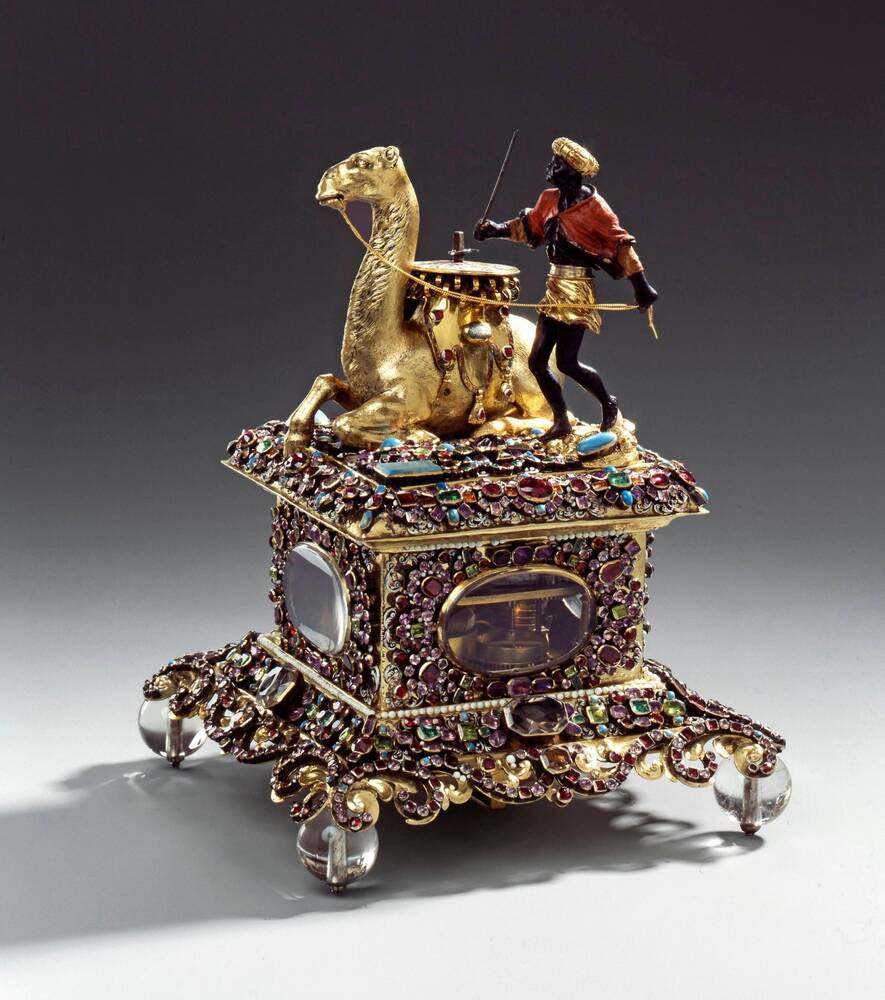These are two splendid examples of the goldsmith’s art in the seventeenth century. On the clock, you see a Moor forcing a resting camel to get up. Next to him, you see another Moor carrying the cuppa, or bowl, of a Nautilus goblet.
Let’s look at the goblet first. It’s a unique work from the end of the seventeenth century. The Nuremberg goldsmith Johann Eissler has combined material and technique in a most unconventional way. The dark edges of the gem-settings, simply outlined with black paint, contrast strongly with the brilliance of the mother-of-pearl. The nautilus shell is richly decorated with bands, gems, pearls and gilded enamel. The Moor who forms the stem of the goblet finds his counterpart in the dark eagle on the lid. With outspread wings, it is perching on the imperial orb. In one claw it holds a sceptre; in the other, it is subjugating the crescent – the symbol of the Ottoman Empire. This goblet has a political message. It’s a metaphor of the German empire’s victory over invading Turkish armies. It may have been produced as a direct reference to the Turkish wars.
Now if you look through the rock crystal window of Hans Jacob Mair’s box-shaped table clock, you’ll see the workings inside. The face is on top – on the camel’s back. The casing is richly studded with jewels and enamel. The tone for the basic red-and-violet decoration is set by amethysts and garnets. The legs of the clock are rock crystal, and they give the casing a certain lightness.
That lightness is carried through to the figure on the top. The robes of the moor holding the camel’s reins seem to be blowing in the wind, which emphasises the vibrancy and lightness of the figure. But the materials used are not what you’d expect! The Moor’s legs have been carved out of mother-of-pearl, and then painted black! His body, however, is made of boxwood. The figure of the camel is cast metal; the hide, beautifully chased.

